In early 2024, Bandai announced a set of seven miniature crustaceans in their ever-growing Diversity of Life on Earth line. I was must admit, I had mixed emotions for this set. Two of the figures I really wanted! For one of them, I go either way. And for the remaining four, I didn’t need or really want any of them. I tossed around getting the entire set for myself, getting the entire set and trading or selling the ones I didn’t want, just getting just the 2-3 I really wanted, or, honestly, not getting any of them at all! I have a preference for sets of small figures, so I went ahead and got the entire set. Of course, now that they are in hand, I am glad I did. The seven figures represent six species, but using only four sculpts. Assembly wasn’t required for any of them (although it looks like they are snapped together). Five of the figures have a couple points of articulation. With the exception of one of them, they all fit in the 1:1 scale range (and for the seventh, it probably could scale 1:1 for a smaller specimen). The figures will be presented in the order they appear on the accompanying paperwork. I have included geographic distribution, habitat, size/scale, and list other figures available for the species. For this last bit of data, I am probably not aware of every figure of some of these, so please don’t consider the lists exhaustive.

For starters, let’s look at the three fiddler crabs. All three were marketed in the genus Uca, even though the genus was split into multiple genera in more than one subfamily in 2016. All three figures represent males and all three use the same sculpt. As such I can cover the basics on the figures’ construction all at once. Only the paint job and scale will differ from model to model (although they all scale within 1:1). There are three points of articulation. The first two are on the right leg with the large claw, one at the merus-body juncture and one at the juncture between the merus and carpus. The claw itself does not open or close. The third is at the merus-body juncture on the left leg with the small claw.
Bowed Fiddler Crab, Tubuca arcuata
- Geographic distribution: West Pacific, from Japan to Vietnam
- Habitat: Mangrove swamps, mud flats
- Size/scale: Carapace approximately 2.7 cm wide for a scale of 1.9:1-1:1.4
- Other figures of this species: Koro Koro (2010), Eikoh* (2018), Takara Tomy A.R.T.S.* (2020, 2022), Wing Mau (year unknown) [those with an asterisk are my identifications; the figures were not marketed at the species level]

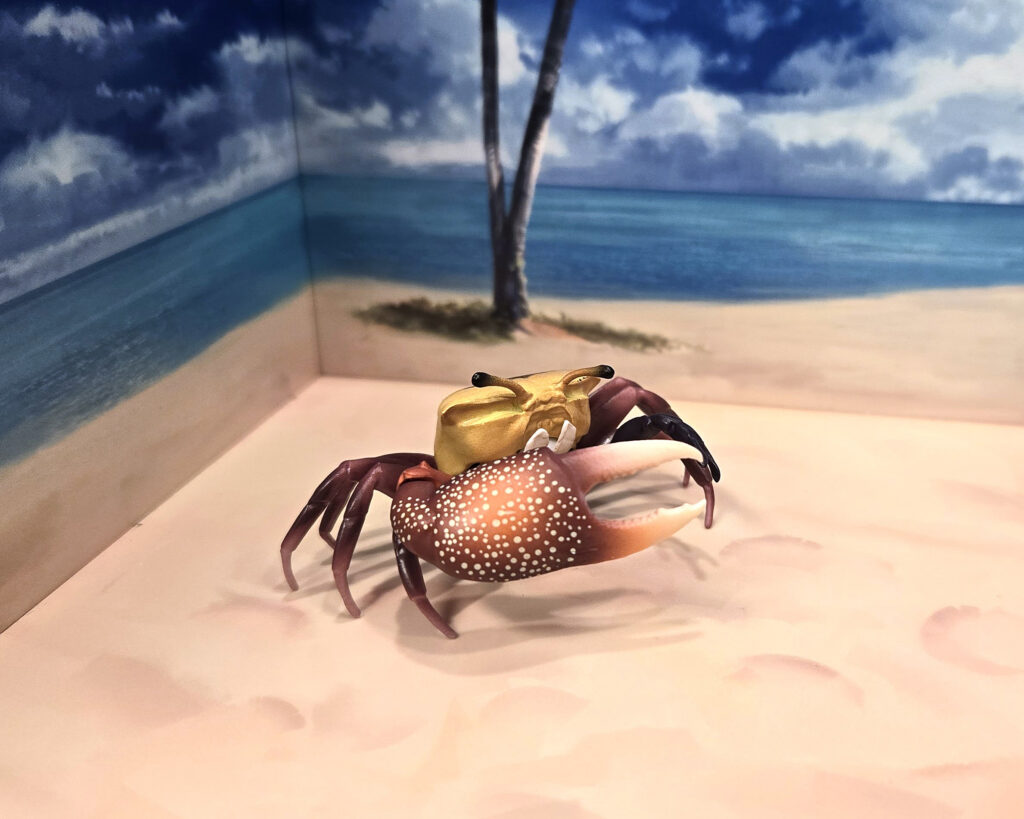
Thick-legged Fiddler Crab, Paraleptuca crassipes
- Geographic distribution: West and South Pacific
- Habitat: Mangrove swamps, intertidal mudflats
- Size/scale: Carapace width approximately 2.7 cm for a scale of 1.8:1-1:1.5
- Other figures of this species: Paleo-Creatures (2015), Wing Mau (year unknown)
- Notes: This figure was marketed as Uca chlorophthalma crassipes, although P. crassipes is generally regarded as a valid species.
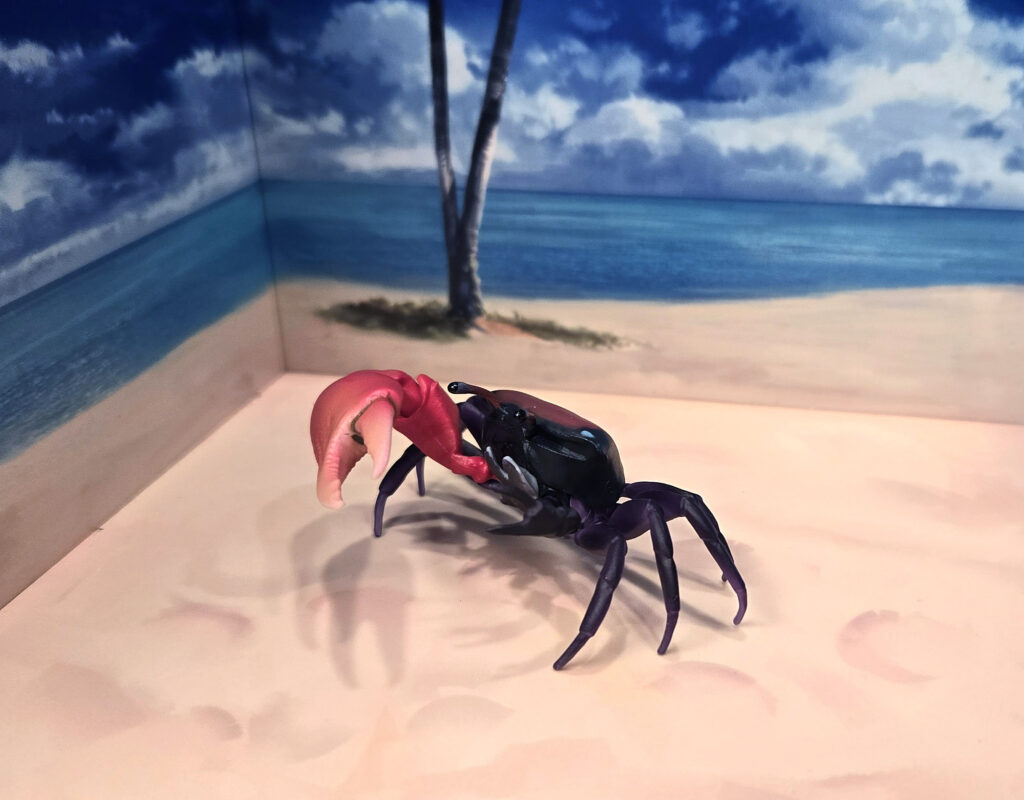

Tetragonal Fiddler Crab, Gelasimus tetragonon
- Geographic distribution: Indo-Pacific
- Habitat: Intertidal mud flats and sandy beaches, often among rocks and corals at mid-tide
- Size/scale: Carapace width approximately 2.7 cm for a scale of 1.8:1-1:0.9
- Other figures of this species: Kaiyodo (2013), Takara Tomy A.R.T.S. (male and female, year unknown)
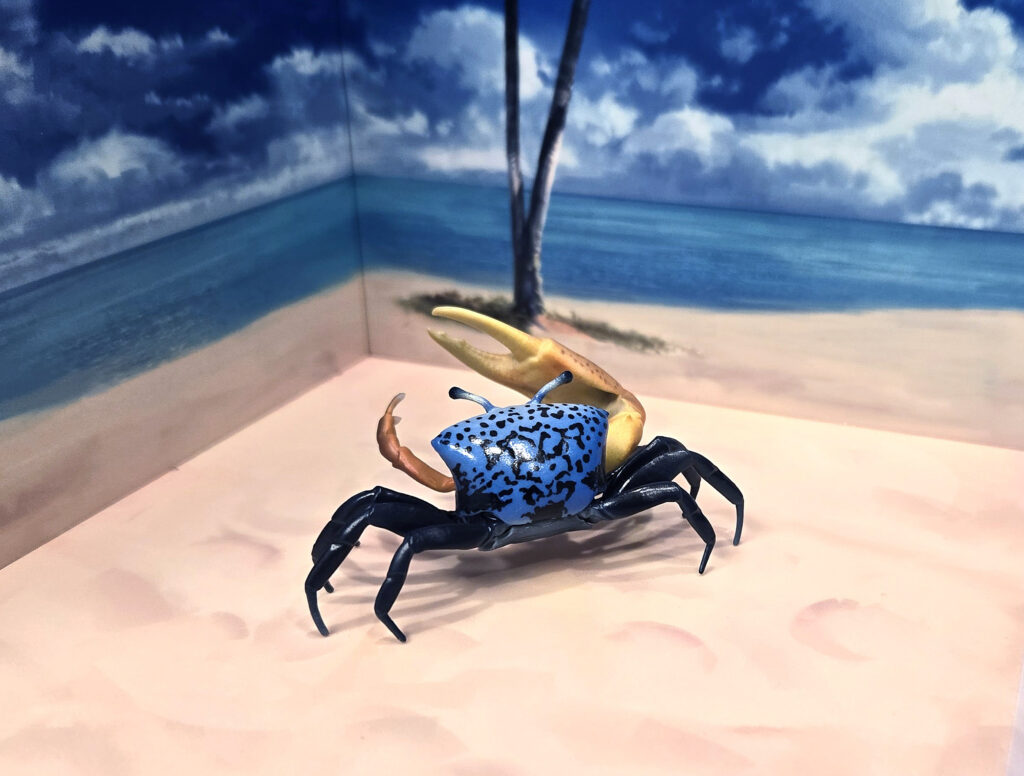
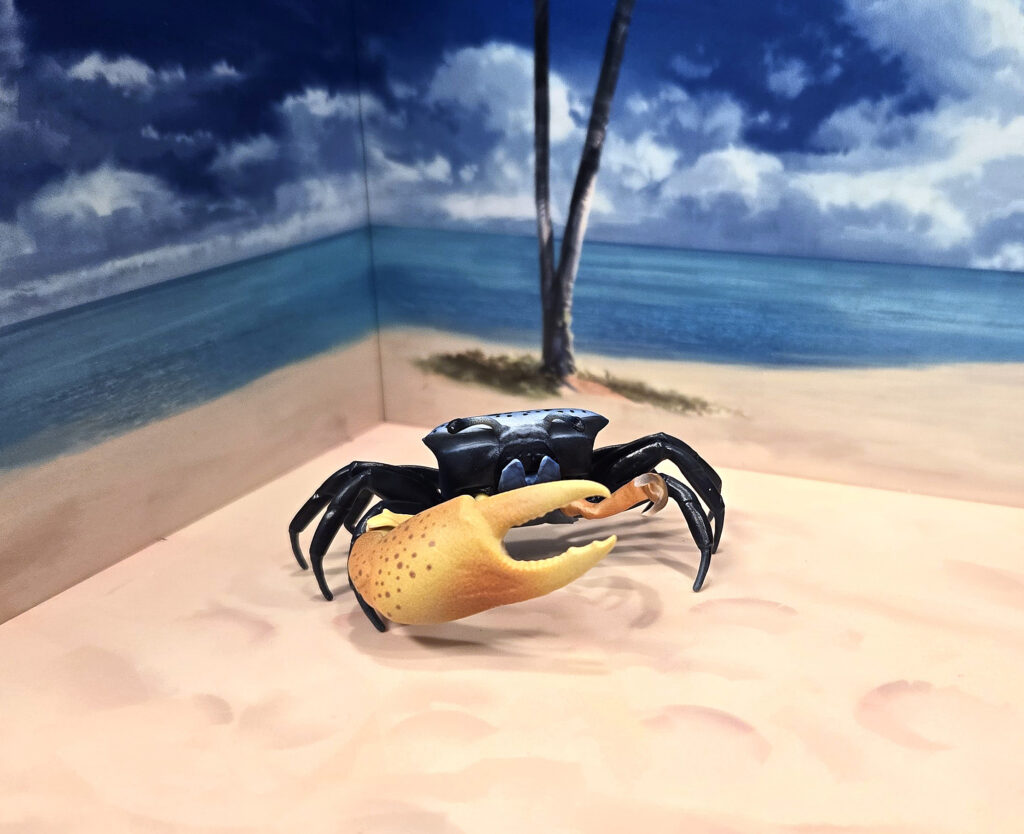
The next two figures represent the Red-clawed Crab, Chiromantes haematocheir. Both figures use the same sculpt and are painted to represent ‘typical’ and ‘red’ morphs. There are four points of articulation, two on each of the claw arms: one at the merus-body juncture and one at the juncture between the merus and carpus. The claws themselves do not open or close.
- Geographic distribution: East Asia, including China, Formosa, Taiwan, Korean Peninsula, and Japan
- Habitat: Supralittoral, often some distance from the sea, including swamps, mud flats, freshwater creeks, mountain streams
- Size/scale: Carapace width approximately 2.7 cm for a scale of 1.2:1-1:1.3
- Other figures by this species: Bandai (2022, two color forms), Kaiyodo (2000, 2013, 2019; the 2013 figure comes in two color forms), Wing Mau (year unknown), Yujin (year unknown).


The last two in the set are the two I was most excited about!
Red Frog Crab, Ranina ranina
- Geographic distribution: Indo-Pacific
- Habitat: Coral reefs, at depths of 1-200 meters
- Size/scale: Carapace length approximately 3.5 cm for a scale of 1.2:1-1:4.3
- Other figures of this species: two by Kaiyodo; one for the Study Room collection (year unknown) and one for the Shinagawa Aquarium (2008). Both Kaiyodo figures are permanently affixed to habitat-style bases.
- Notes: There are no points of articulation on this figure.
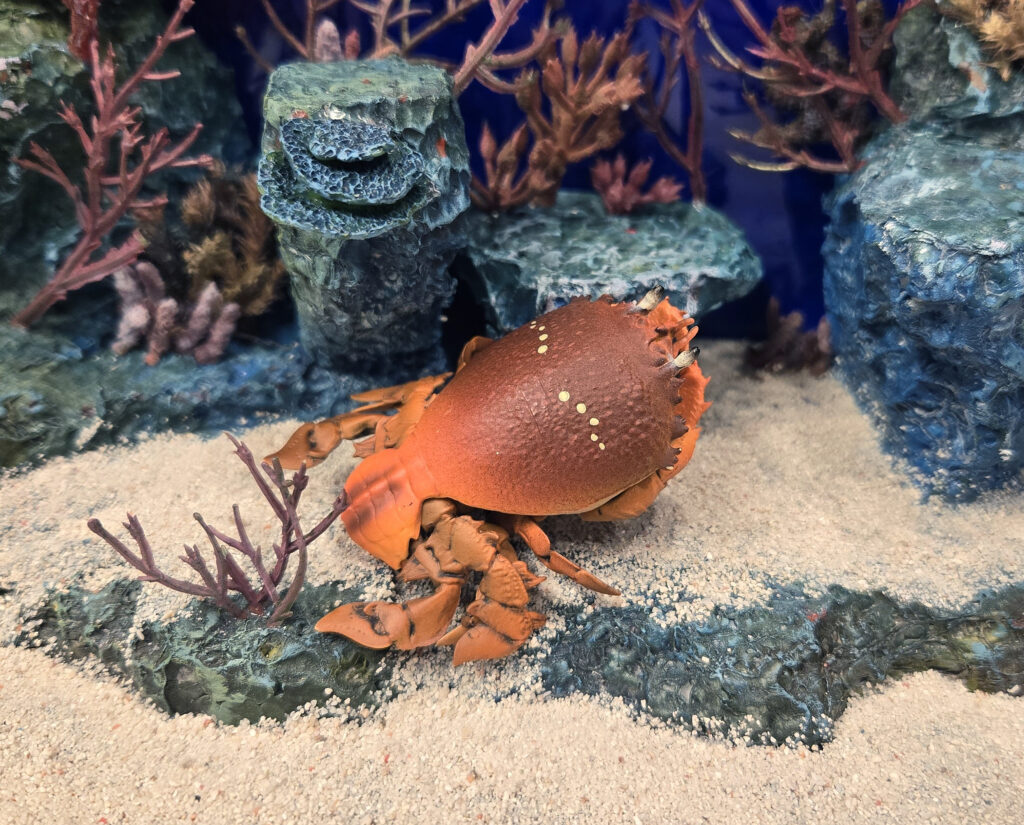

Slipper Lobster, Ibacus ciliatus
- Geographic distribution: Northwest Pacific
- Habitat: Coastal waters, usually in areas with soft sandy or muddy substrates; at depths of 49-314 meters
- Size/scale: Carapace length approximately 2.8 cm for a scale of 1:2.9 for a maximum-sized specimen
- Other figures of this species: Epoch and Takara Tomy A.R.T.S. (for both, years unknown)
- Notes: There are no points of articulation on this figure. If one uses total body length for this figure, it scales to 1:3.8, but that metric should probably not be used due to the compact and slightly curved nature of the abdomen.

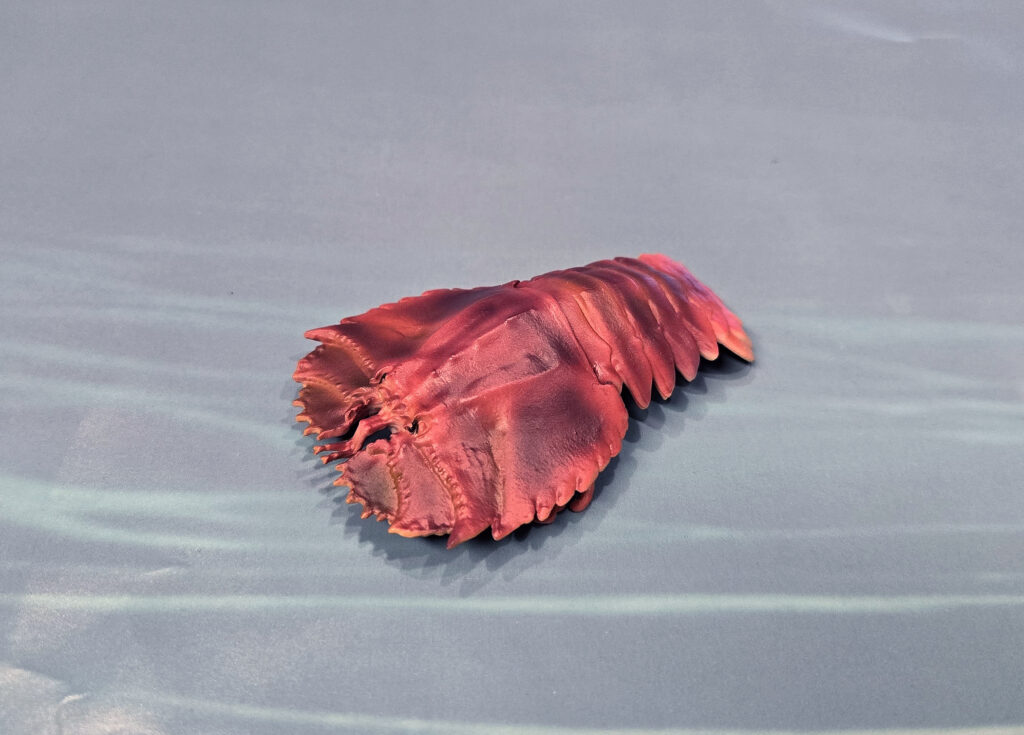
Overall, figures in this set come highly recommended, especially if one doesn’t have any of the species already represented in their collections. They are extremely detailed and of the quality we have come to expect from Bandai’s ‘Diversity’ figures, yet small enough to not take up a ton of shelf space. For the ‘other versions’ mentioned above for each species, nearly all of them are of great quality, too, but most at this point are probably retired and maybe difficult to find or expensive when available.
Disclaimer: links to Ebay and Amazon on the AnimalToyBlog are affiliate links, so we make a small commission if you use them. Thanks for supporting us!



